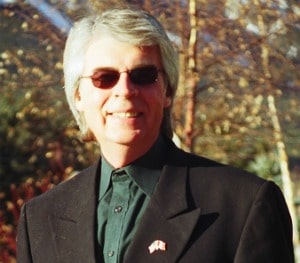
(By Ronald Robinson) It can’t be denied: Radio surely had one hell of a run. Even in the days when radio was third in the Print/TV/Radio hierarchy, there was money to be made – lots of money. I was working for a TV/AM/FM combo that sported the finest of facilities, and where my AMer alone was raking in $5 million a year — in late-‘70s dollars!
Of course, talent remained underpaid while management made out like barter bandits. Vehicles were handed over with multiple, gift-wrapped quarts of high-quality booze, and swimming pools were installed. Only occasionally were charges brought.
A dozen AEs remained in the office to answer their phones and only went out for copy-sparkle meetings, to sign contracts or to attend lavish dinners. Advertisers had to book six months to a year out.
We were still understaffed even though we had 12 on-air personalities, five copywriters, and three producers. We all lined up for remotes because we needed the dough. I will admit, however, that in lieu of boosted paychecks, we enjoyed some fabulous perks – including free skiing in the Rockies – about 45 minutes from Calgary.
We were all encouraged to reach for our potential as “personalities.” Ours was the top-rated station, even though we ran an A/C format, so we could avoid the Top-40 “robo-jock” syndrome. We had far more flexibility to attempt longer bits and even chance some editorial comment. Because we were running single cuts of music and two-minute stop-sets, we were on-the-air – a lot. This was the circumstance for years.
A new license was granted to the market and I was recruited to come over to participate in an exciting new venture as the afternoon drive guy. My instructions were to just keep doing what I had always been doing. The format was also very appealing – a 60/40 split between oldies and contemporary, adult hits. The audience ate us up – followed by the ratings, and followed by the advertisers. The only wrinkle was that we would often play two cuts back-to-back. We could still talk over the extros and intros. It made for another fabulous five-year run.
A distinction I want to make concerns the communicative principles, strategies, and methodologies I have been promulgating in this space for years. My numbers were greater than the morning show that was still the top-rated show in the market anyway. I never revealed I was breaking so many of the traditional assumptions about relating to a broadcast audience. I was always surprised that nobody else noticed, or called me on it.
Meanwhile, the ownership started to meddle. Previously, they had been out of town building stations across the country. When they got back to the city, they started making arbitrary programming changes, including the latest and greatest strategy of playing long music sweeps in all day-parts except mornings. This, naturally, cut into the time the talent was spending on the air. Considerations were made about paying me way too much to sit on my thumbs while the tunes played out.
To my mind, this one implementation was the beginning of the end of radio’s renaissance. Since then other factors, including the scorched earth policies of the consolidators and the onslaught of other media guaranteed that radio would not be entering any “Age of Enlightenment.”
This situation has been the accepted standard for so long that finding transitional fossils is proving to be more difficult every day. It can also be argued where once radio flourished in a lush garden of talent growing tall and where clear rivers of cash dollars flowed freely, what remains is a dry scrubland of extremely slim pickings.
I might also throw in the understanding that Charlie Darwin never spoke of the “survival of the strongest or the fittest.” Instead he pointed out that the species that was the most adaptive was more likely to win the struggle. “Adaptive” along with “innovation” are not to be found in modern radio’s lexicon.
Radio is experiencing its “Age of Duh.” Communicative “enlightenment” and “innovation” are not in the headlights or on the radar. Further, as other media are producing magnificent examples of advertising art, radio’s “theatre of the mind” consists of foisting no more than stick figures.
Ronald T. Robinson has been involved in Canadian radio since the ’60s as a performer, writer and coach, and has trained and certified as a personal counselor. E-mail Ron at [email protected].





